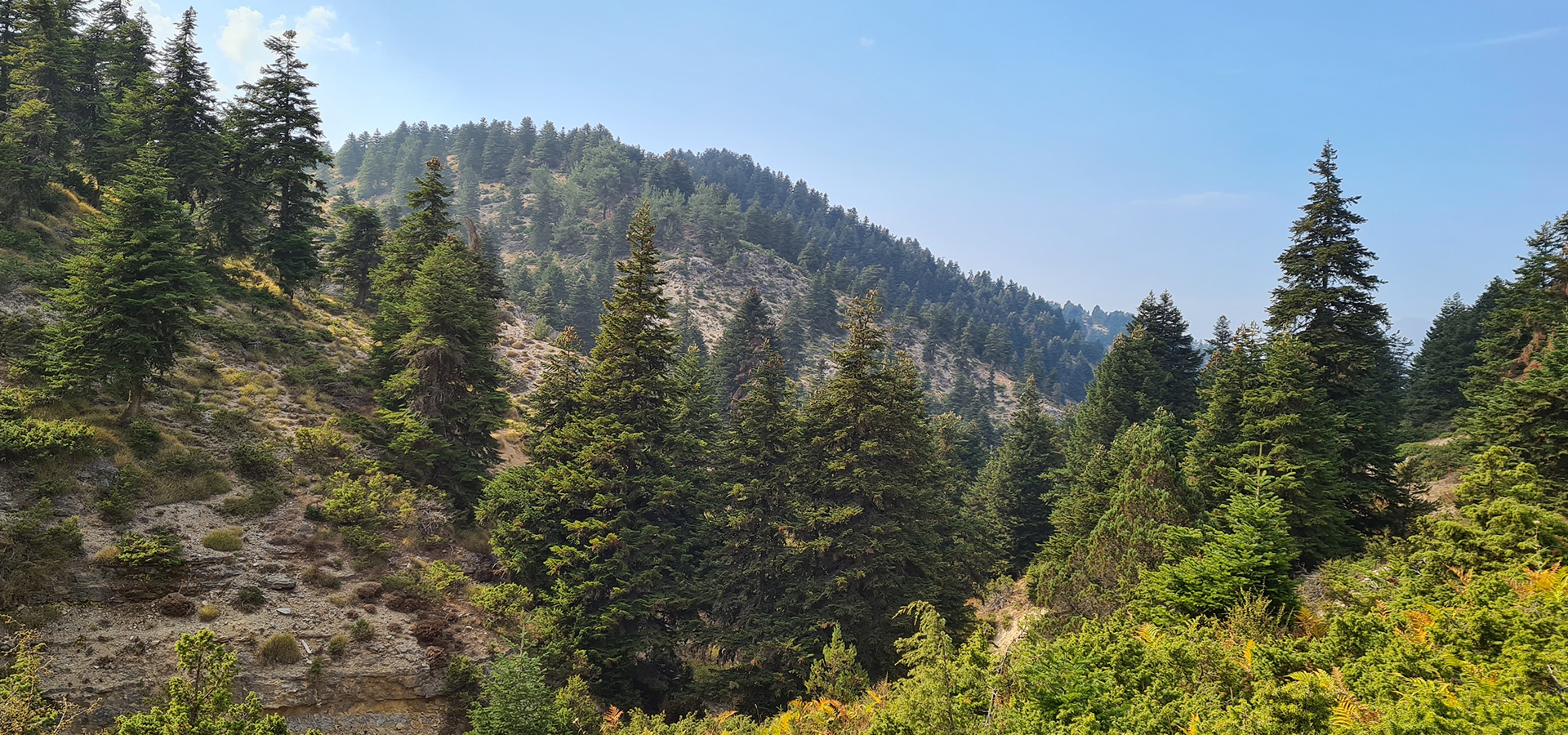
Fir, or “sapin” in French or “شوح”, The Christmas tree of Lebanon
- August 21, 2022
- 0
Cover image: Spyro Klitira – Akkar
Fir, or “sapin” in French or “شوح” in Arabic is the tree that has been bound to Christmas in western societies. However, fir trees can only be found in cool and temperate zones of the Globe.
Before the advent of the “plastic” Christmas trees, people used to rely on local native trees for Christmas decoration. Yet, in Lebanon, we are blessed with the presence of fir, known as the Cilician fir or Abies cilicica in Latin. The tree can be found mainly in Akkar heights from Karm Chbat to Qamouaa where it covers large areas and dominates the landscape. It is also found mixed with other famous trees like cedars, junipers and oaks, between Mechmech-Akkar, Qelleh forest, Danniyeh heights from upper Wadi Jhannam to Jurd el Njas to Ain Hoqailat, and finally in Ehden nature reserve which is its last bastion to the south.
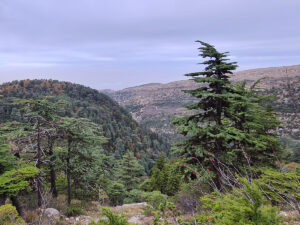
The Cilician fir has been facing multiple aggressions since the last century. It has been cut by the Allies armies during the first and second world wars, as these armies needed wood for the railway construction and for other purpose. Later locals cut the trees either for fuel wood or to be sold as Christmas trees. The reduction of tree cover opened the space towards the intrusion of other tree species like junipers and pines, especially that those are sun-loving, while fir is a shade tolerant tree. In other words, to germinate and grow during the first years of its life, fir requires shade and moisture in the ground. It is seldom found under shrubs to benefit from their protection from the teeth of goats, and mostly from the sun. These “nurse plants” that could be junipers, barberry, or other shrubs are essential for the successful regeneration of fir.
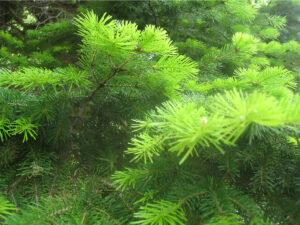
Unfortunately, the reduced tree canopy cover, grazing and cutting compromised a healthy natural regeneration of fir in its biggest forest in Qamouaa. However, in other parts of Lebanon, fir found an ally to impose itself. In some parts of Dannieh and in Ehden, a parasite called the dwarf mistletoe is sucking the sap from the branches of the Syrian juniper and the oxycedar. The host trees end up dying. The fir which benefits from the shade of those trees, can then find its path within the dying trees to grow and thrive and reach tree size and dominate the forest.
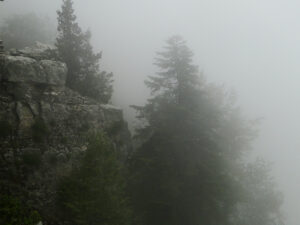
The Cilician fir grows between 1300 and 1900m, in areas with frequent fog in summer, and with enough cold and snow in winter. It can reach 32m height in Lebanon, and is considered among the tallest trees. Some specimen can reach 1m diameter, and are centennial. The leaves are very dark, and from their color comes the name of the “black valley” or “Wadi el Aswad” in Akkar el Atiqa. Yet, those leaves are bright green during spring giving the tree a wonderful tint.
Fir can be distinguished from cedar by the elongated brown red cones that crown the tree top, while the cedar has its cones on the lower branches. By this strategy, the fir exposes its seeds on the top of the tree to wind blow, and benefit from an effective seed dispersal away from the mother tree.
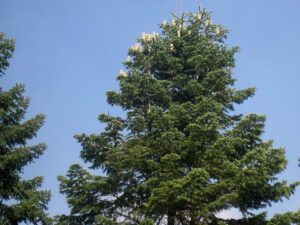
Fir is a conifer, and therefore it is prohibited from cutting in Lebanon. Yet, in other countries it is widely planted and cut for timber.
Due to its vulnerability to climate change impacts, a strategy for fir conservation in its natural area of distribution is required, involving management plans that prohibit grazing in some sections of the forest, and further restore its ancient forest through assisted natural regeneration or plantation under “nurse plants”.
Prepared by Dr Jean Stephan











